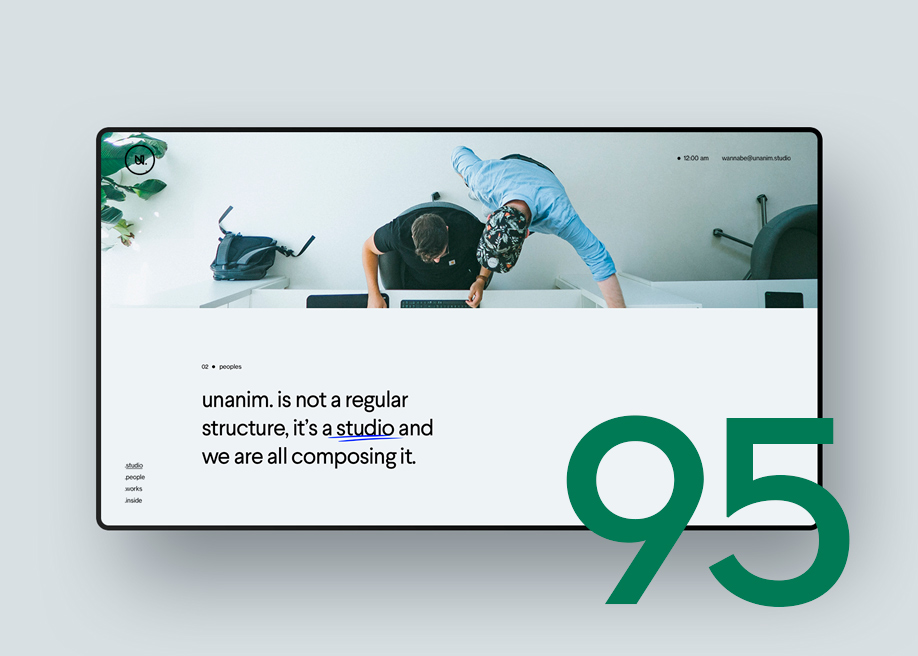Website Design London Ontario That Represents Your Business Values
Website Design London Ontario That Represents Your Business Values
Blog Article
Just How to Properly Incorporate Looks and Functionality in Website Design
When developing a site, you need to strike a balance in between visual appeals and functionality. It's not simply about looking excellent; your design should also offer an objective and guide individuals effectively. By concentrating on simplicity and intuitive navigation, you can produce an appealing experience. What elements genuinely boost usability while keeping visual appeal? Let's check out the essential principles that can bring about an unified mix of charm and feature.
Understanding the Value of Aesthetic Appeals and Functionality
When you design a web site, recognizing the balance in between aesthetics and performance is crucial for developing an effective individual experience. A visually enticing site grabs interest, however it's the capability that maintains customers engaged. If your site looks excellent yet is challenging to browse, visitors will quickly shed interest and leave.Consider your target market and what draws them in. You wish to create a style that shows your brand name while guaranteeing convenience of use. Streamlined designs, user-friendly navigation, and clear phone calls to action can enhance both aesthetic appeals and capability.

Concepts of Reliable Website Design
To produce an effective website design, you require to abide by several crucial principles that enhance both user experience and visual allure. Focus on simplicity; a tidy format assists users browse conveniently. Make use of a regular color design and typography to maintain comprehensibility across your website. This fosters knowledge and trust.Next, guarantee your style is responsive. Customers accessibility web sites on numerous tools, so your style needs to adapt flawlessly. Focus on visual pecking order; emphasize essential aspects with positioning, shade, or dimension to lead customers' focus.Finally, incorporate adequate white space. It stops clutter and makes material extra absorbable. Keep in mind, efficient website design equilibriums aesthetics and capability, so every design option should offer a function. By adhering to these principles, you'll create a site that's not only aesthetically appealing however also user-friendly, ultimately maintaining visitors involved and urging them to return.
Focusing On Individual Experience
When focusing on user experience, you'll wish to start by understanding what your users really need. Simplifying navigating layout can make a substantial distinction in how conveniently they discover what they're trying to find. Additionally, improving visual power structure helps assist their interest to one of the most vital aspects on your site.
Comprehending Individual Requirements
Understanding customer needs is important for producing an engaging web experience that keeps visitors returning. To accomplish this, you have to recognize the goals and preferences of your target market. Start by carrying out customer research, like interviews or studies, to collect understandings on what users worth most. Pay interest to their discomfort factors and obstacles when communicating with similar internet sites. This information permits you to customize your layout, guaranteeing capability lines up with user assumptions. Furthermore, take into consideration creating customer personas that represent various sectors of your audience, helping you imagine their demands during the layout process. When you prioritize comprehending customer needs, you develop an internet site that not just looks fantastic however likewise delivers a seamless, delightful experience that promotes commitment.
Streamlining Navigation Design

Enhancing Visual Hierarchy
A solid visual hierarchy is crucial in leading customers with your website and ensuring they engage with vital content. To accomplish this, utilize color, spacing, and dimension strategically. Make vital elements like headings bigger and bolder than body text, attracting attention promptly. Utilize contrasting shades to highlight calls to activity, motivating clicks. Additionally, employ sufficient white space to different areas, making material digestible and inviting.Consider the circulation of info; set up aspects logically, leading individuals' eyes from one indicate the next. Usage aesthetic cues, like arrows or lines, to guide interest. By focusing on visual power structure, you improve individual experience and raise the chance of conversions, guaranteeing your internet site is both visually pleasing and functionally efficient.
Color Theory and Its Effect on Use
While selecting the best colors for your web site might feel like a small information, it greatly affects use and user experience. Shade influences just how users perceive details and can enhance or impede navigating. For instance, contrasting shades can assist important elements stand apart, making it simpler for visitors to discover what they need.Additionally, take into consideration the psychology of colors: blue usually inspires trust, while red produces seriousness. Recognizing your target audience can direct your shade choices, ensuring they resonate well.Moreover, constant shade systems help develop brand name identification, making your website more memorable. Be cautious-- as well numerous shades can overwhelm customers. Stick to a limited combination that enhances your web content and maintains clarity.Incorporating access is also crucial; validate your shade combinations are friendly for those with visual problems. By attentively applying shade theory, you'll boost usability and develop a more appealing user experience.
Typography: Harmonizing Style and Readability
Color choices established the stage for your internet site, but typography plays a similarly crucial duty in boosting individual experience. You want your text to connect plainly while likewise mirroring your brand name's character. Begin by selecting fonts that are not only appealing yet likewise legible. Sans-serif typefaces often work well for electronic screens, as they're less complicated to read at different sizes.Maintain a pecking order by utilizing different font sizes and weights; this guides individuals through your web content easily. Think about line spacing and letter spacing; too limited can annoy readers, while also loose can disrupt the flow. Limit your font style choices to two or three to keep the design cohesive.Finally, constantly check your typography across various devices and browsers. What looks great on one screen might not on one more. Balancing style with readability warranties that your message reverberates, keeping your target market involved and informed.
Receptive Style: Making Aesthetics Deal With All Gadgets
To ensure your website looks excellent on any kind of device, you'll require to welcome responsive layout concepts. This approach assurances your site adapts to different display sizes, providing an excellent customer experience. Begin by using fluid grids and versatile photos that scale flawlessly. Instead of dealt with measurements, go with percentages and relative units, enabling your format to adjust dynamically.Next, apply media inquiries in your CSS. These allow you use various designs based on device features, like screen width. In this manner, you can keep aesthetic charm while ensuring functionality.Don' t forget touch targets; make sure buttons and web links are very easy to tap on smaller screens. Focus on necessary web content, so customers can quickly navigate your site no matter their device. By focusing on these components, you'll produce an engaging, aesthetically appealing experience that meets the needs of all users, whether they're on a mobile phone, tablet, or desktop computer .
Performing Functionality Screening for Constant Renovation
To improve your website design, you need to set clear functionality goals that align with customer demands. By conducting individual tests, you can gather useful responses on exactly how real individuals interact with your site. Examining these outcomes will assist you make educated enhancements and develop a much more effective customer experience.
Specifying Usability Goals
While aesthetics can draw users in, specifying usability goals is essential for ensuring their experience stays gratifying and seamless. Start by identifying what you desire customers to achieve on your site (website design london Ontario). Consider their needs, jobs, and actions. Are they searching for information, purchasing, or registering for a newsletter? Develop clear criteria to gauge success, like job conclusion prices or time on task. Focus on instinctive navigating, easily accessible content, and receptive layout to enhance use. On a regular basis take another look at these goals as customer assumptions evolve. By defining use objectives, you produce a framework for reviewing and improving your internet site's efficiency. This focus on functionality not only improves user contentment but likewise enhances the total performance of your style
Conducting Customer Tests
Performing user examinations is vital for improving your site and guaranteeing it meets your target market's demands. Beginning by identifying your target users and producing an examination plan that outlines your purposes. Use a mix of quantitative and qualitative approaches, such as surveys, interviews, and task-based observations, to gather extensive responses. Welcome individuals to browse your site while you observe their communications and keep in mind any type of troubles they come across. Urge open discussion to capture their ideas and sensations concerning the layout and performance. Keep sessions brief and focused, ensuring you cover key areas without overwhelming customers. Make sure to document all searchings for, as this information will be vital for making enlightened design choices that enhance both looks and use.
Evaluating Test Results
Just how can you properly examine the outcomes of your functionality examinations to drive continual improvement? Start by classifying feedback into usual styles. Seek patterns in customer behavior that highlight pain factors or locations for improvement. Usage quantitative information, like job conclusion rates and time on task, to measure usability fairly. Do not fail to remember to take into account qualitative understandings from individual comments; they typically expose underlying concerns that numbers can't show. Focus on the most impactful searchings for and create workable items for your design group. Bear in mind, it has to do with repeating-- execute changes, after that test once again. This cycle of testing, examining, and refining assists you equilibrium appearances and performance, ensuring your web site fulfills user needs effectively while keeping visual charm.
Regularly Asked Concerns
Exactly how Do I Select the Right Color Scheme for My Web site?
To choose the right shade scheme for your internet site, consider your brand name's character, target audience, and emotional influence (website design london Ontario). Usage shade psychology, develop consistency, and warranty readability. Examination combinations to see what resonates finest with visitors
What Devices Can Aid With Website Design Aesthetics and Performance?
You can use devices like Adobe XD, Figma, and Lay out to enhance your web design's appearances and functionality. These platforms supply intuitive interfaces, partnership features, and pre-made design templates to streamline your innovative procedure and enhance your designs.
Just How Can I Incorporate Animations Without Endangering Capability?
To website include computer animations without jeopardizing performance, prioritize refined impacts that improve user experience. Usage CSS animations for smoother interactions, assurance quick tons times, and examination on various devices to maintain efficiency while including aesthetic charm.
What Are Typical Blunders to Avoid in Internet Style Aesthetic Appeals?
When creating, prevent chaotic layouts, inadequate color selections, and irregular font styles. Do not overlook mobile responsiveness, as it can estrange customers. Confirm your style straightens with your brand, producing a seamless experience that engages site visitors properly.
Just how Typically Should I Update My Web site's Design for Optimal Aesthetic Appeals?
You should upgrade your web site's layout every 1-2 years to maintain up with patterns and keep ideal aesthetics. On a regular basis restoring visuals helps involve warranties and visitors your website remains appealing and user-friendly. When you create a site, comprehending the balance between visual appeals and functionality is necessary for creating a reliable user experience. To develop a reliable web style, you need to adhere to numerous crucial principles that boost both individual experience and visual appeal. Customers access web sites on different gadgets, so your style needs to adapt flawlessly. When prioritizing user experience, you'll want to start by understanding what your individuals absolutely need. Start by carrying out customer study, like surveys or interviews, to collect insights on what customers worth most.
Report this page